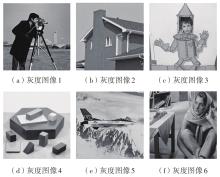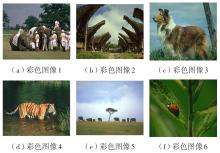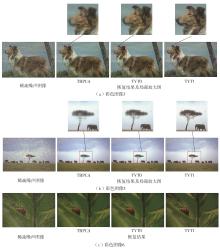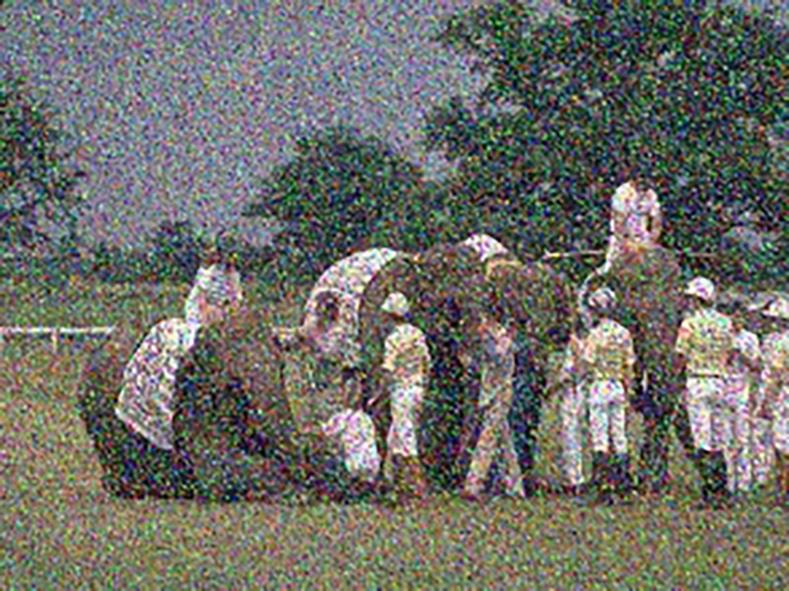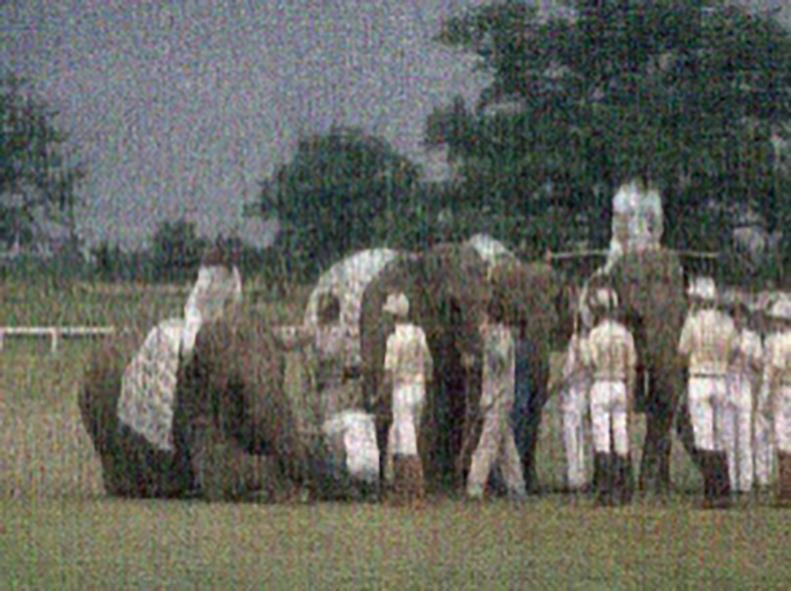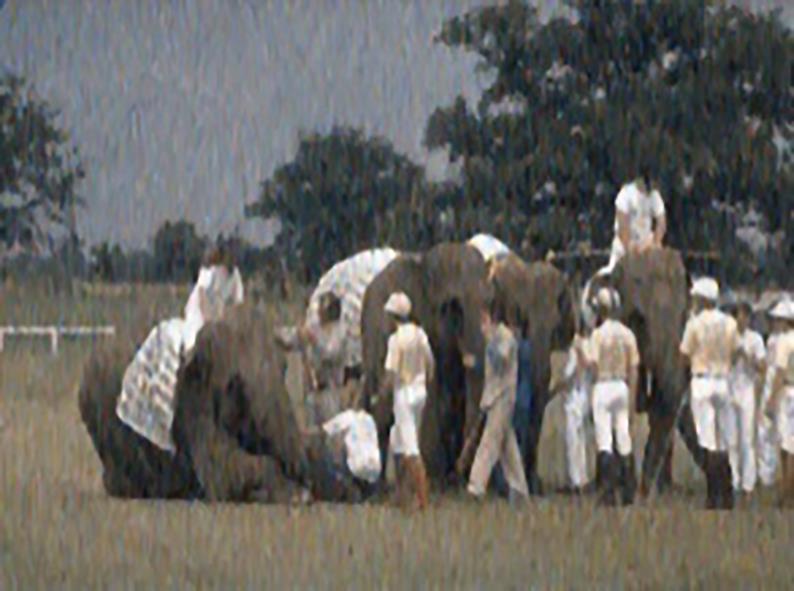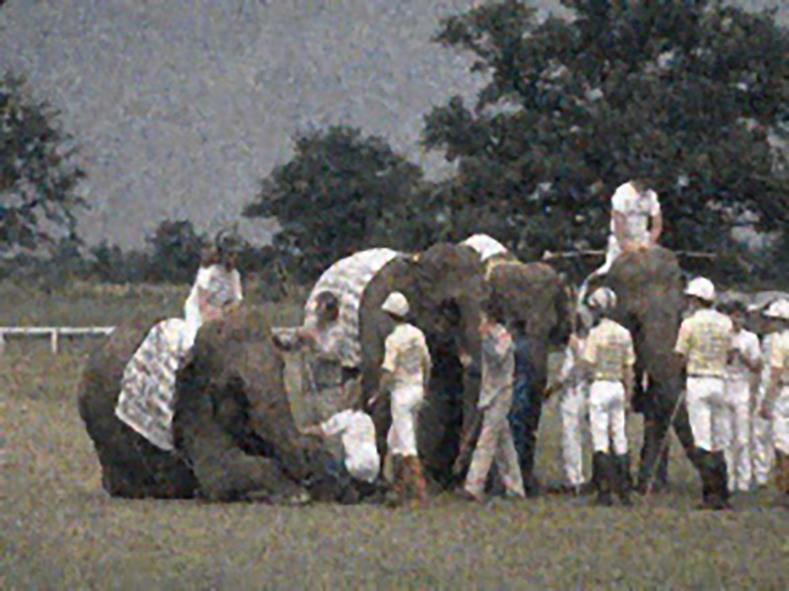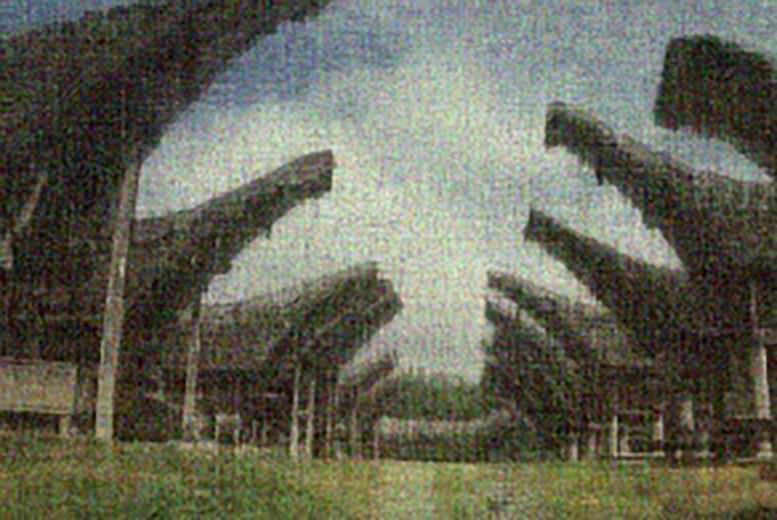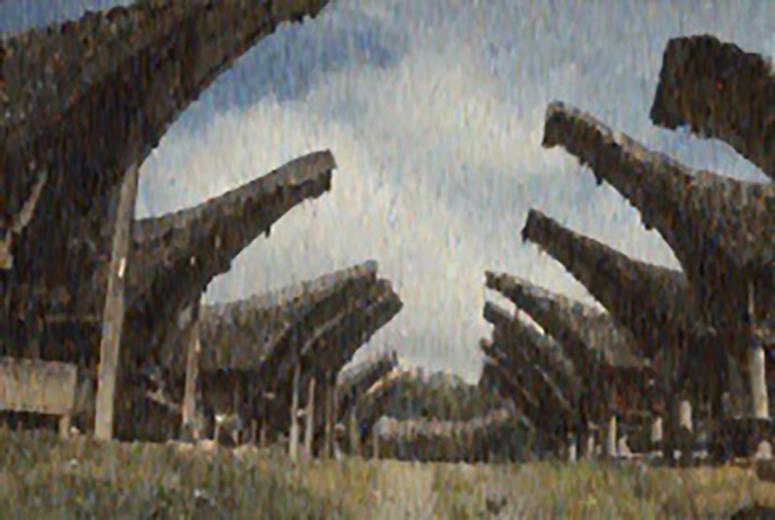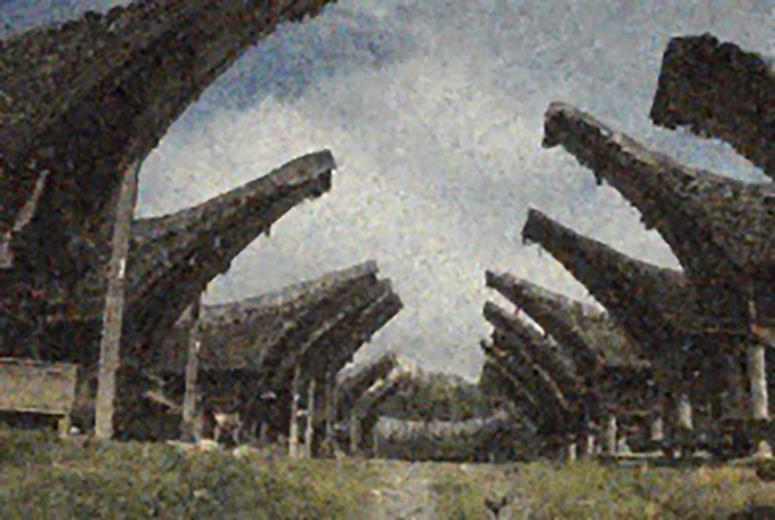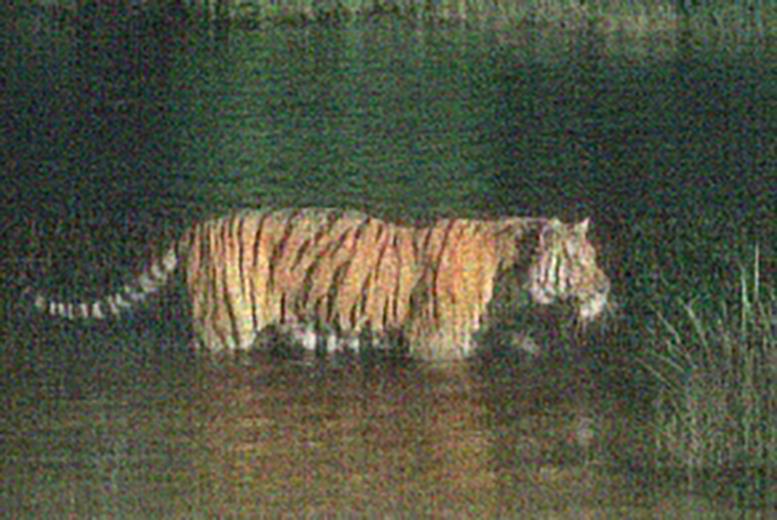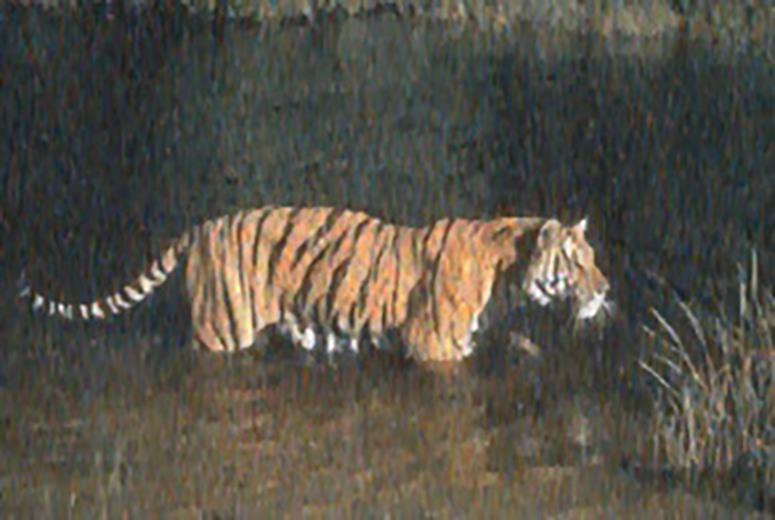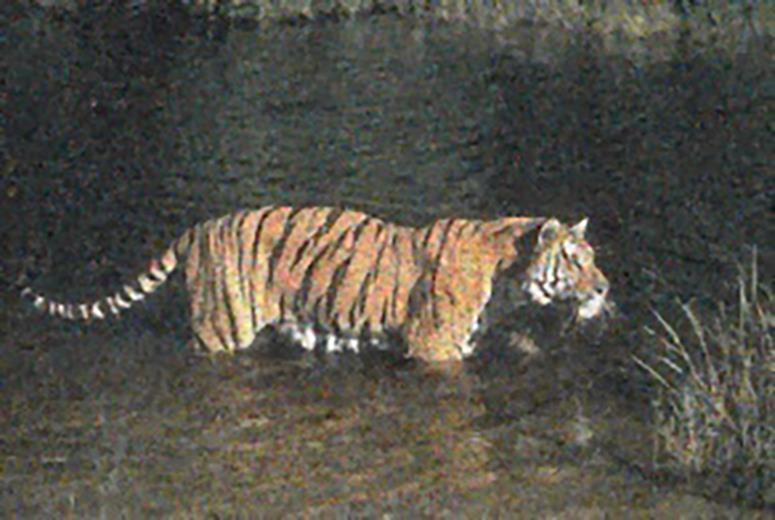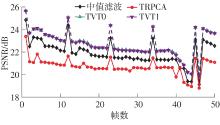Journal of South China University of Technology(Natural Science Edition) ›› 2023, Vol. 51 ›› Issue (5): 45-53.doi: 10.12141/j.issn.1000-565X.220485
Special Issue: 2023年计算机科学与技术
• Computer Science & Technology • Previous Articles Next Articles
Robust TruncatedL1-L2Total Variation Sparse Restoration Models
HAN Le JIANG Yihua
- School of Mathematics,South China University of Technology,Guangzhou 510640,Guangdong,China
-
Received:2022-08-01Online:2023-05-25Published:2022-10-09 -
Contact:韩乐(1977-),女,副教授,主要从事矩阵优化、图像处理研究。 E-mail:hanle@scut.edu.cn -
About author:韩乐(1977-),女,副教授,主要从事矩阵优化、图像处理研究。 -
Supported by:the General Program of the National Natural Science Foundation of China(11971177);the Basic and Applied Basic Research Foundation of Guangdong Province(2021A1515010210);the Degree and Graduate Education Reform Research Foundation of Guangdong Province(2022JGXM011)
CLC Number:
Cite this article
HAN Le, JIANG Yihua. Robust TruncatedL1-L2Total Variation Sparse Restoration Models[J]. Journal of South China University of Technology(Natural Science Edition), 2023, 51(5): 45-53.
share this article
Table 1
PSNR, SSIM and running time of recovering grey images with Gaussian noise"
| 图像序号 | PSNR/dB | SSIM/dB | 运行时间/s | ||||||
|---|---|---|---|---|---|---|---|---|---|
| TVT0 | TVT1 | TVT0 | TVT1 | TVT0 | TVT1 | ||||
| 1 | 26.82 | 25.62 | 27.16 | 0.760 0 | 0.506 9 | 0.802 8 | 0.02 | 0.01 | 45.25 |
| 2 | 28.10 | 26.72 | 30.19 | 0.760 0 | 0.438 4 | 0.818 0 | 0.02 | 0.01 | 43.30 |
| 3 | 26.84 | 26.96 | 29.08 | 0.800 0 | 0.508 9 | 0.880 7 | 0.02 | 0.01 | 44.01 |
| 4 | 28.90 | 27.68 | 31.21 | 0.820 0 | 0.692 1 | 0.896 1 | 0.02 | 0.01 | 46.86 |
| 5 | 26.92 | 26.51 | 29.38 | 0.860 0 | 0.807 3 | 0.910 0 | 0.10 | 0.05 | 282.85 |
| 6 | 23.98 | 24.90 | 24.90 | 0.860 0 | 0.806 7 | 0.834 0 | 0.10 | 0.05 | 733.15 |
Table 2
PSNR of recovering color images with noises"
| 图像序号 | 含稀疏噪声的PSNR/dB | 含混合噪声的PSNR/dB | |||||
|---|---|---|---|---|---|---|---|
| TRPCA | TVT0 | TVT1 | TRPCA | TVT0 | TVT1 | ||
| 1 | 23.28 | 24.38 | 24.71 | 19.18 | 21.48 | 21.74 | |
| 2 | 24.49 | 24.67 | 24.98 | 19.21 | 21.40 | 21.40 | |
| 3 | 27.70 | 28.00 | 27.50 | 20.68 | 23.22 | 22.71 | |
| 4 | 24.43 | 24.62 | 24.40 | 19.52 | 21.36 | 21.08 | |
| 5 | 29.73 | 30.11 | 29.87 | 21.79 | 21.79 | 23.73 | |
| 6 | 31.52 | 31.89 | 29.83 | 20.63 | 21.12 | 20.75 | |
Table 3
Running time and iteration number of recovering color images with noises"
图像 序号 | 噪声 | 每次迭代的平均运行时间/s | 总迭代次数 | ||||
|---|---|---|---|---|---|---|---|
| TRPCA | TVT0 | TVT1 | TRPCA | TVT0 | TVT1 | ||
| 1 | 稀疏 噪声 | 0.002 | 0.993 | 4.956 | 43 | 150 | 150 |
| 2 | 0.001 | 0.960 | 3.815 | 42 | 150 | 150 | |
| 3 | 0.001 | 1.025 | 3.962 | 43 | 84 | 113 | |
| 4 | 0.002 | 1.043 | 3.909 | 43 | 127 | 150 | |
| 5 | 0.001 | 0.970 | 4.029 | 44 | 89 | 143 | |
| 6 | 0.001 | 1.020 | 3.720 | 43 | 116 | 101 | |
| 1 | 混合 噪声 | 0.001 | 1.149 | 3.474 | 40 | 150 | 1 |
| 2 | 0.002 | 1.127 | 3.087 | 40 | 150 | 1 | |
| 3 | 0.001 | 1.099 | 3.071 | 40 | 150 | 1 | |
| 4 | 0.002 | 1.056 | 3.140 | 40 | 150 | 1 | |
| 5 | 0.001 | 1.119 | 3.092 | 41 | 150 | 1 | |
| 6 | 0.001 | 1.108 | 3.257 | 40 | 150 | 150 | |
| 1 | WANG C, TAO M, NAGY J G,et al .Limited-angle CT reconstruction via the L1/L2 minimization [J].SIAM Journal on Imaging Sciences,2021,14(2):749-777. |
| 2 | FANNJIANG A, LIAO W .Coherence pattern-guided compressive sensing with unresolved grids [J].SIAM Journal on Imaging Sciences,2012,5(1):179-202. |
| 3 | LAI M J, XU Y, YIN W .Improved iteratively reweighted least squares for unconstrained smoothed l q minimization [J].SIAM Journal on Numerical Analysis,2013,51(2):927-957. |
| 4 | BIAN W, CHEN X J .A smoothing proximal gradient algorithm for nonsmooth convex regression with cardinality penalty[J].SIAM Journal on Numerical Analysis,2020,58(1):858-883. |
| 5 | YOU J, JIAO Y, LU X,et al .A nonconvex model with minimax concave penalty for image restoration [J].Journal of Scientific Computing,2019,78(2):1063-1086. |
| 6 | THI H A L, PHAMDINH T .DC programming and DCA:thirty years of developments [J].Mathematical Programming,2018,169:5-68. |
| 7 | ARAGÓN ARTACHO F J, VUONG P T .The boosted difference of convex functions algorithm for nonsmooth functions [J].SIAM Journal on Control and Optimization,2020,30(1):980-1006. |
| 8 | LI W J, BIAN W, TOH K C .DC algorithms for a class of sparse group l 0 regularized optimization problems [EB/OL].(2021-09-11)[2022-01-03].. |
| 9 | MA T H, LOU Y F, HUANG T Z .Truncated l 1 - 2 models for sparse recovery and rank minimization [J].SIAM Journal on Imaging Sciences,2017,10(3):1346-1380. |
| 10 | LIU T X, PONG T K, TAKED A .A refined convergence analysis of pDCA e with applications to simultaneous sparse recovery and outlier detection [J].Computational Optimization and Applications,2019,73:69-100. |
| 11 | CARRILLO R E, RAMIREZ A B, ARCE G R,et al .Robust compressive sensing of sparse signals:a review [J].EURASIP Journal on Advances in Signal Processing,2016,2016:108/1-17. |
| 12 | BABAHREINIAN M, TRON R .A computational theory of robust localization verifiability in the presence of pure outlier measurements [EB/OL].(2019-10-12)[2021-05-03].. |
| 13 | GAO X, CAI X, HAN D .A Gauss-Seidel type inertial proximal alternating linearized minimization for a class of nonconvex optimization problems [J].Journal of Global Optimization,2020,76:863-887. |
| 14 | BOLTE J, DANIILIDIS A, LEWIS A S,et al .Clark subgradients of stratifiable functions [J].SIAM Journal on Optimization,2007,18(2):556-572. |
| 15 | CHAMBOLLE A .An algorithm for total variation minimization and applications [J].Journal of Mathematical Imaging & Vision,2004,20:89-97. |
| 16 | XU Y, HUANG T Z, LIU J,et al .Split Bregman iteration algorithm for image deblurring using fourth-order total bounded variation regularization model [J].Journal of Applied Mathematics,2013,2013:238561/1-11. |
| 17 | CHAMBOLLE A, EHRHARDT M J, RICHTÀRIK P,et al .Stochastic primal-dual hybrid gradient algorithm with arbitrary sampling and imaging applications [J].SIAM Journal on Optimization,2018,28(4):2783-2808. |
| 18 | HINTERRMULLER M, STADLER G .An infeasible primal-dual algorithm for total bounded variation-based inf-convolution-type image restoration [J].SIAM Journal on Scientific Computing,2006,28(1):1-23. |
| 19 | CHEN C, MICHAEL K N, ZHAO X .Alternating direction method of multipliers for nonlinear image restoration problems [J].IEEE Transaction on Image Processing,2015,24(1):32-43. |
| 20 | GOLDFARB D, YIN W .Parametric maximum flow algorithms for fast total variation minimization [J].SIAM Journal on Scientific Computing,2009,31(5):3712-3743. |
| 21 | BARBERO L,SRA S .Modular proximal optimization for multidimensional total-variation regularization [J].Journal of Machine Learning Research,2018,19(1):1-82. |
| 22 | NOCEDAL J, WRIGHT S T .Numerical optimization[M].New York:Springer,1999:510. |
| 23 | MARTIN D, FOWLKES C,TAL D,et al .A database of human segmented natural images and its application to evaluating segmentation algorithms and measuring ecological statistics[C]∥ Proceedings of the Eighth IEEE International Conference on Computer Vision.Vancouver:IEEE,2001:416-423. |
| 24 | LU C, FENG J, CHEN Y,et al .Tensor robust principal component analysis with a new tensor nuclear norm [J].IEEE Transactions on Pattern Analysis and Machine Intelligence,2020,42(4):925-938. |
| 25 | BIOUCAS-DIAS J M, FIGUEIREDO M, OLIVEIRA J P .Total variation-based image deconvolution:a majorization minimization approach[C]∥ Proceedings of 2006 IEEE International Conference on Acoustics Speech and Signal Processing.Toulouse:IEEE,2006:861-864. |
| [1] | HU Guanghua, OU Meitong, LI Zhendong. Multi-Object Recognition and 6-DoF Pose Estimation Based on Synthetic Datasets [J]. Journal of South China University of Technology(Natural Science Edition), 2024, 52(4): 42-50. |
| [2] | LUO Yutao, GAO Qiang. Traffic Sign Detection Based on Channel Attention and Feature Enhancement [J]. Journal of South China University of Technology(Natural Science Edition), 2023, 51(12): 64-72. |
| [3] | LI Haiyan, YIN Haolin, LI Peng, et al.. Image Inpainting Algorithm Based on Dense Feature Reasoning and Mix Loss Function [J]. Journal of South China University of Technology(Natural Science Edition), 2023, 51(9): 99-109. |
| [4] | LIU Yijun, WANG Jiada, ZHONG Shijie, et al.. Fast Multi-View Clustering Based on Uniform Label Matrix [J]. Journal of South China University of Technology(Natural Science Edition), 2023, 51(9): 110-119. |
| [5] | WANG Shiyong, QIAN Guokang, LI Di, et al.. Real-Time Template Matching Method for Edge Features [J]. Journal of South China University of Technology(Natural Science Edition), 2023, 51(9): 1-10. |
| [6] | LIN Zhijian, DING Yongqiang, YANG Xiuzhi, et al. Parallel Pipeline Hardware Design of Intra Rate-Distortion Optimization Prediction Mode in HEVC [J]. Journal of South China University of Technology(Natural Science Edition), 2023, 51(5): 95-103. |
| [7] | MA Biyun, WU Gang, LIU Jiaojiao, et al. Low Complexity Blood Flow Velocity Estimation Algorithm via Sparse Pulse Sampling [J]. Journal of South China University of Technology(Natural Science Edition), 2023, 51(5): 63-69. |
| [8] | YI Qingming, LÜ Renyi, SHI Min, et al. Lightweight Object Detection Combined with Multi-Scale Dilated-Convolution and Multi-Scale Deconvolution [J]. Journal of South China University of Technology(Natural Science Edition), 2022, 50(12): 41-48. |
| [9] | HE Kai, LIU Zhiguo, LI Dashuang, et al. Non-rigid Point Set Registration Using Neighborhood Structure and Driving Force Criterion [J]. Journal of South China University of Technology(Natural Science Edition), 2022, 50(4): 73-80. |
| [10] | ZHANG Yan, GAO Zijian, XU Changkang, et al. Classification Method of Tactile Pressure Footprint Based on Fusion Distribution Graph Network [J]. Journal of South China University of Technology (Natural Science Edition), 2022, 50(1): 91-100. |
| [11] | HU Guanghua, WANG Ning, HE Wenliang, et al. Unsupervised Surface Defect Detection Method Based on Image Inpainting [J]. Journal of South China University of Technology (Natural Science Edition), 2021, 49(7): 76-85,124. |
| [12] | ZHANG Yan, WU Luotian, WANG Nian, et al. 2D Footprint Classification Based on Multiple-Module Relation Network [J]. Journal of South China University of Technology (Natural Science Edition), 2021, 49(6): 66-76. |
| [13] | YANG Chunling LING Xi. Two-Stage Multi-Hypothesis Network for Compressed Video Sensing Reconstruction Algorithms Based on Deep Learning [J]. Journal of South China University of Technology (Natural Science Edition), 2021, 49(6): 88-99. |
| [14] | GENG Qinghua, LIU Weiming. A Fast and Stable Algebraic Solution to Perspective-Three-Point Problem [J]. Journal of South China University of Technology(Natural Science Edition), 2021, 49(1): 58-64,73. |
| [15] | ZHENG Sifan, WANG Weixing, HE Zhanhua, et al. Research on Swing Amplitude Detection of Automobile Wiper with Two Granularity Optical Flow Manifold Learning#br# [J]. Journal of South China University of Technology (Natural Science Edition), 2020, 48(1): 123-132. |
| Viewed | ||||||
|
Full text |
|
|||||
|
Abstract |
|
|||||
